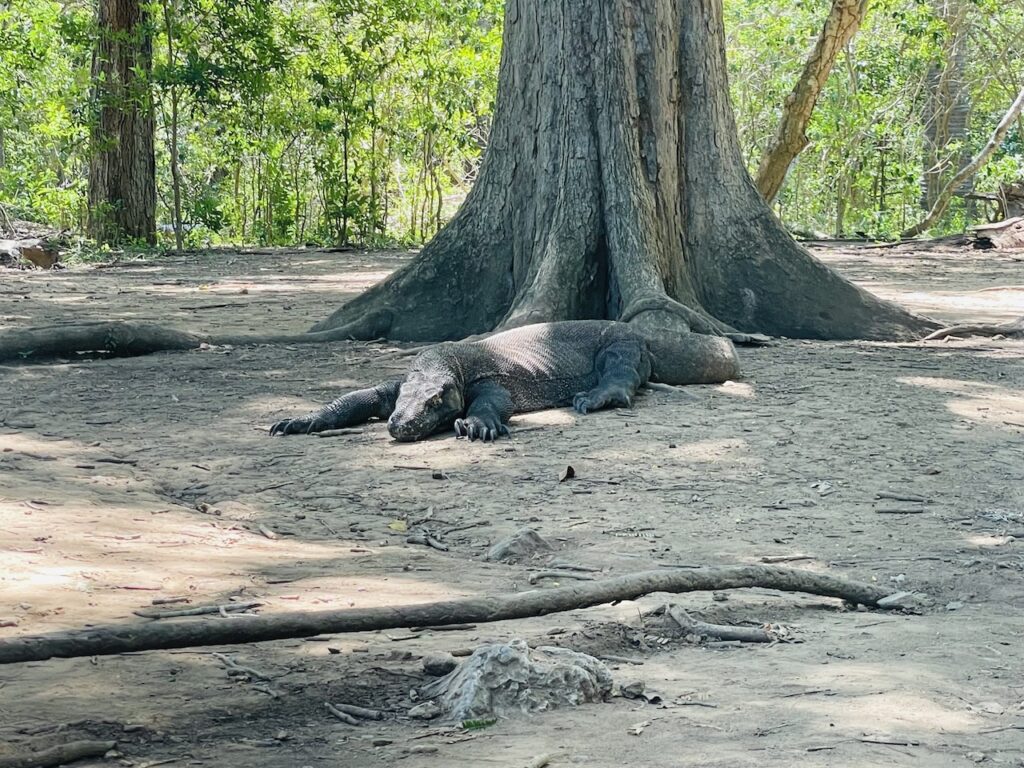Komodo National Park, located in Indonesia, is the only place in the world where you can see Komodo dragons in the wild. Beyond the dragons, the park offers excellent snorkeling opportunities with diverse marine life in crystal-clear waters. Here’s a guide to help you plan your visit.
Getting There
Indonesia, with its approximately 17,000 islands, is an extensive archipelago spanning Southeast Asia and Oceania. Komodo National Park comprises several islands:
- Komodo Island: Home to the largest population of Komodo dragons.
- Rinca Island: Another significant habitat for these dragons.
- Padar Island: Known for its dramatic landscapes and panoramic views. There are no dragons on this island.
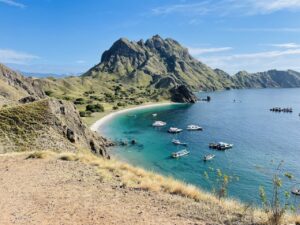
To visit these islands, first fly to Indonesia and then take a domestic flight to Komodo Airport in Labuan Bajo on the western tip of Flores Island. Flights from Jakarta to Labuan Bajo: The most efficient route is a 2 to 2.5-hour flight. Flights from Bali to Labuan Bajo: A shorter 1 to 1.5-hour flight.
Upon arrival in Labuan Bajo, which is about 10-15 minutes by car from the airport, you’ll find various accommodations ranging from budget to luxury. Many visitors stay here before heading to the park. We booked two different day trips to explore the islands where the dragons live.
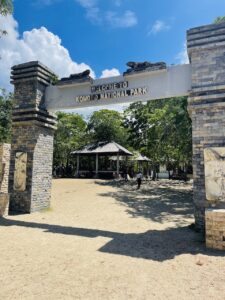
Best Time to Visit
Dry Season (April to October): This period is ideal due to dry weather, lower humidity, and calm seas. For the best underwater visibility and marine experiences, visit during this time. However, expect more tourists, especially from June to August.
Wet Season (November to March): Expect higher humidity, more rain, and rougher seas. Although the parks are lusher and prices are lower, rain can disrupt activities, and crowds are smaller.
Mating Season (July to August): Dragons are more active and sometimes engage in fights, which can be observed by tourists. This is a popular time to visit.
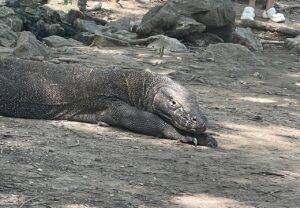
Where to See Komodo Dragons
You can see Komodo dragons at several locations. On Komodo Island, the most famous habitat, you’ll find the largest population. However, I preferred Rinca Island due to smaller tour groups and a safer, more controlled environment. Rinca also features a nice facility with a museum for learning more about the dragons.

Other Top Attractions
Padar Island: A moderately strenuous 1 to 2-hour hike leads to a viewpoint offering breathtaking views.

Pink Beach: Known for its unique pink sand, created by the mix of white sand and red coral fragments. Located on Komodo Island, it is a popular stop for many boat tours.

Kalong Island Overview: Each evening at dusk, tens of thousands of fruit bats emerge to hunt. Boat tours often include a sunset stop here to witness this spectacular sight.

Safety Tips
- Mandatory Guides: Always explore the park with an authorized guide, who can safely handle wildlife encounters.
- Distance: Maintain a minimum of 5 meters (16 feet) from Komodo dragons. Avoid approaching or provoking them.
- Behavior: Keep movements calm and quiet to avoid startling the dragons.
- Food and Smell: Do not carry food or items with strong odors, as they can attract the dragons.
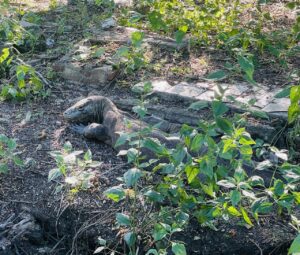
Boat Tours
When planning your trip, be aware of potential issues with boat tours. Some reviews mention old, rickety boats and difficulties getting on and off them. Although the Indonesian people are very accommodating, I recommend these tours only if you’re in good physical shape, as mobility issues could make boarding challenging.
Controversies: Tourism Ban
Recent changes to tourist permits and fees have sparked debate. The Indonesian government is considering a temporary ban to address environmental concerns and habitat degradation. While these measures aim to protect the park’s unique biodiversity, they have faced backlash from local communities and tourists. The situation remains dynamic as authorities balance conservation with tourism interests.

Costs
Visiting Komodo National Park involves several fees, including park entrance, conservation, and island-specific charges. These fees support conservation efforts and manage tourist flow. Typically, these costs are included in guided tours, but verify this before booking. Guide fees generally range from IDR 300,000 to 500,000 (USD 20 to 35) per group.
Facts About Komodo Dragons
- Largest Living Lizard: Komodo dragons are the largest lizards on Earth, reaching up to 10-12 feet (3-3.7 meters) in length and weighing as much as 300 pounds (136 kilograms). Their sheer size makes them stand out among lizards and reptiles.
- Highly Developed Sense of Smell: These dragons have an acute sense of smell, allowing them to detect prey from several kilometers away. They use their forked tongues to collect scent particles, which are then processed by the Jacobson’s organ.
- Carnivorous Diet: Komodo dragons are opportunistic hunters and scavengers. They feed on a variety of prey, including deer, wild boar, smaller dragons, and carrion. Their powerful bite helps them capture and subdue larger animals.
- Venomous Bite: Recent studies reveal that Komodo dragons possess venom glands producing toxic proteins. Their bite contains bacteria and venom that can cause severe infections and shock in prey.
- Reproduction: Female Komodo dragons often lay their eggs in abandoned nests previously made by pigs, monkeys, or birds. They cover the eggs with soil or debris to incubate them. Additionally, Komodo dragons can reproduce via parthenogenesis (asexual reproduction), where eggs develop without fertilization.
- Tree-Climbing Behavior of Young Dragons: Hatchlings and juvenile Komodo dragons climb trees to evade predators. As they grow and become heavier, they outgrow this behavior and shift to a more ground-dwelling lifestyle.
- Starvation Risk in Older Dragons: As Komodo dragons age, their hunting efficiency declines. Older dragons may struggle to find sufficient food, which can lead to starvation if they cannot secure enough prey.

Conclusion
Visiting Komodo National Park was one of my most memorable experiences. I prefer seeing animals in their natural habitats over zoos, so I highly recommend a trip to Komodo National Park. If you get the chance to visit, remember to respect these remarkable animals and support conservation efforts. By doing so, you help ensure that future generations can also experience the wonder of Komodo National Park.
For more of my adventures checkout my other posts:
